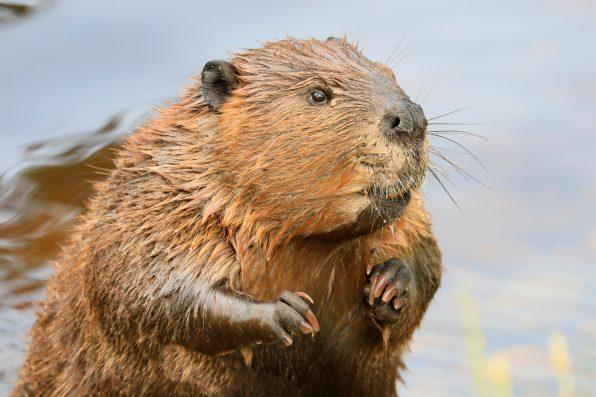In North America, Giant Beavers The Size Of Black Bears That Weighed Over 220 Pounds Once Roamed The Earth Alongside Saber-Toothed Tigers And Mammoths During The Pleistocene Era

During the Pleistocene era, which is often referred to as the Ice Age, a giant beaver that was the size of a bear roamed the earth alongside the mammoths and saber-toothed tigers in the region that is now North America.
Castoroides was the largest rodent of that time period. It grew more than seven feet long and is estimated to have weighed over 220 pounds. It was closer to an American black bear in size than today’s modern beavers.
Like the beavers we know today, the diet of Castoroides consisted largely of plants. They also had incisors that reached six inches in length. However, compared to modern beavers, their teeth had duller, rounded edges, similar to the shape of a banana, which made it difficult for them to gnaw on tree bark.
In 2019, a study analyzing isotopic signatures in the teeth of giant beavers that lived in the Yukon and Ohio between 50,000 and 10,000 years ago found that they feasted on softer aquatic plants.
Researchers also discovered that they did not cut down trees or build dams, suggesting that wood-harvesting beavers came along much later, possibly around twenty million years ago.
Additionally, the giant beaver did not have the distinctive flat, paddle-shaped tail we associate with the industrious, modern beaver. Instead, its tail was longer and skinnier.
Since Castoroides’ main food source was aquatic plants, they were highly dependent on wetland habitats for survival. As a result, they were vulnerable to climate change. After the end of the last ice age, the climate became increasingly warm, and the wetlands dried up.
The species became extinct about 10,000 years ago, and researchers believe that the decline in natural wetland areas and their inability to use wood as a resource led to their demise.
So even though wood-harvesting beavers and giant beavers co-existed on the earth for thousands of years, the wood-harvesting ones managed to pull through since they were able to alter landscapes to create their own homes wherever they were needed.

vlad_g – stock.adobe.com – illustrative purposes only, not the actual beaver
The fossil record shows that a small population of giant beavers lived in the lowlands located south of the Great Lakes before they were wiped out completely. Along with woolly mammoths and mastodons, the large beavers were one of the last surviving members of the Pleistocene giants of North America.
If true crime defines your free time, this is for you: join Chip Chick’s True Crime Tribe
Forget About The Venus Flytrap: Have You Ever Heard Of This Meat-Eater Known As Butterwort?
Sign up for Chip Chick’s newsletter and get stories like this delivered to your inbox.
More About:Animals